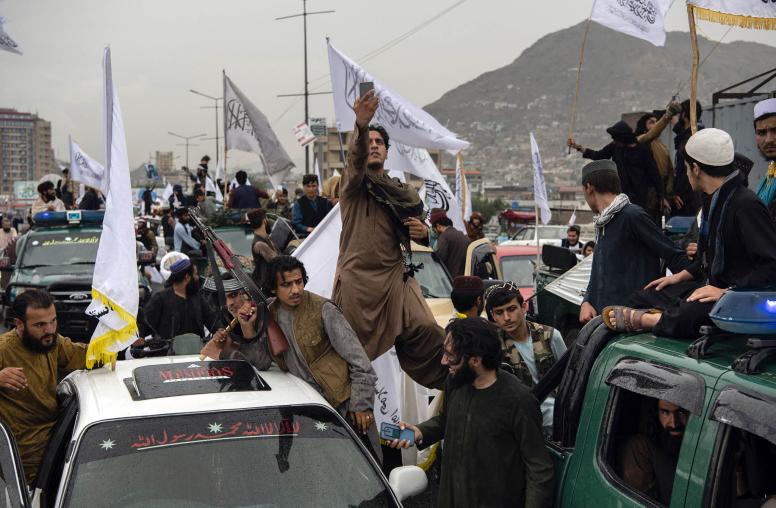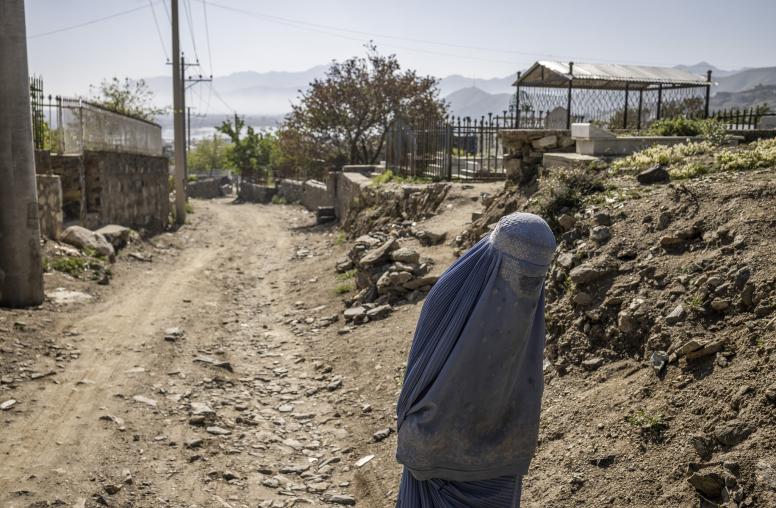Panel at USIP Calls for Assessing Media Actions in Conflicts
Although media has become a core part of the international community’s efforts to manage conflict and promote peacebuilding, the ability to evaluate media interventions in conflict lags behind. There is an urgent need to ramp up the monitoring and evaluation of those efforts, a group of specialists said at the United States Institute of Peace (USIP) on September 9.
September 13, 2011
Although media has become a core part of the international community’s efforts to manage conflict and promote peacebuilding, the ability to evaluate media interventions in conflict lags behind. There is an urgent need to ramp up the monitoring and evaluation of those efforts, a group of specialists said at the United States Institute of Peace (USIP) on September 9.
“Quite often, it [evaluation of media interventions] is an afterthought,” said Stefaan Verhulst, chief of research at the Markle Foundation and a senior research fellow at the Center for Global Communication Studies at the University of Pennsylvania. “You need data; otherwise you fly blind.”
The USIP conference, “Media in Conflict: The Evaluation Imperative,” coincided with the release of what are being called the “Caux Guiding Principles.” Developed initially by a group of international media practitioners, donors, international broadcasters and others who met last December in Caux, Switzerland, the eight steps they suggest lay out a general approach to improve the evaluation of media’s role in conflict, including the creation of a dedicated community of practice. “What you have here,” said Sina Odugbemi, who heads the World Bank’s Communication for Governance & Accounability Program, “is a recipe for reform.” Such reform, Odugbemi said, will require consensus as well as common action by the stakeholders in media interventions in conflict.
In broad terms, the media’s peacebuilding role takes three forms, said Susan Abbott, the deputy director of program development at Internews Network. They include: support for independent journalism, the creation of relevant dramas, direct public service messages and regulatory mechanisms. Abbott suggested that considerable uncertainty lingers over what difference such media efforts make, including confusion over what should be measured. “What counts as an outcome?” she asked.
USIP has played a leading role in the effort to sort through the issues, reflecting its pursuit of identifying and developing best practices in the field of conflict management, including the media, said Sheldon Himelfarb, executive director of the Center of Innovation for Media, Conflict and Peacebuilding at the Institute. “Media has become a core sector unto itself,” he said, “vital in any effort to build a stable society.” Himelfarb described the recommendations as calling for a partnership between funders and those who are implementing media strategies, as well as the evaluators themselves. One result would be a clearer and broadly shared understanding of the “lessons learned” of media interventions that have already been tried. With fiscal stringency in the U.S. government and elsewhere growing, Himelfarb said in an earlier interview, “this is also part of efficiency, of getting bang for your media buck, so we don’t continue to make the same mistakes.”
Some of the conference participants cautioned about the likely difficulties in establishing workable evaluation efforts in conflict zones. “It’s a lot easier to articulate principles than to live them and implement them,” said Tjip Walker, a senior policy analyst in the Policy, Planning and Learning Bureau at the United States Agency for International Development.
Monroe Price, director of the Center for Global Communication Studies at the University of Pennsylvania, also cautioned against allowing the push for more systematic evaluation to crowd out the creative vision of those producing programming. “I worry about…not over-evaluating and [protecting] the role of intuition,” he said.
The conference’s keynote speaker, Voice of America Director David Ensor, drew on his recent experience as the director for communications and public diplomacy at the U.S. Embassy in Kabul to discuss media activities in Afghanistan. He credited the emphasis on evaluation and measuring impact as helping “to determine what works and what doesn’t.” Ensor cited three U.S.-backed media projects in Afghanistan: a mobile messaging network introduced by Afghan-American entrepreneurs known as Paywast; a 10-part reality television show titled “Birth of an Army”; and live public affairs debates on Afghanistan’s 1 TV channel.
Ensor said of Afghanistan: “This is a struggle that will not be won by bullets alone.”
Ensor, who took up his post at Voice of America last month, also referred to three VOA television programs that reflect varying approaches to reaching audiences in countries plagued by conflict or repression: Parazit (“Static”) a satiric current events show broadcast in Farsi to Iranians that has been compared to the “Daily Show”; “The Platform,” a news and analysis show for Pakistanis that is produced jointly with a Pakistani news channel; and “Children of Rape,” a new documentary series, produced with the social media content provider Citizen Global, that examines the aftermath of some of Congo’s violent traumas. “We at the Voice of America are looking for creative ways to reach out to people in conflict zones,” said Ensor.
Explore Further
- Attend "Sifting Fact from Fiction: The Role of Social Media in Conflict," on September 16, 2011.
- See more of USIP's work on Media, Conflict and Peacebuilding



